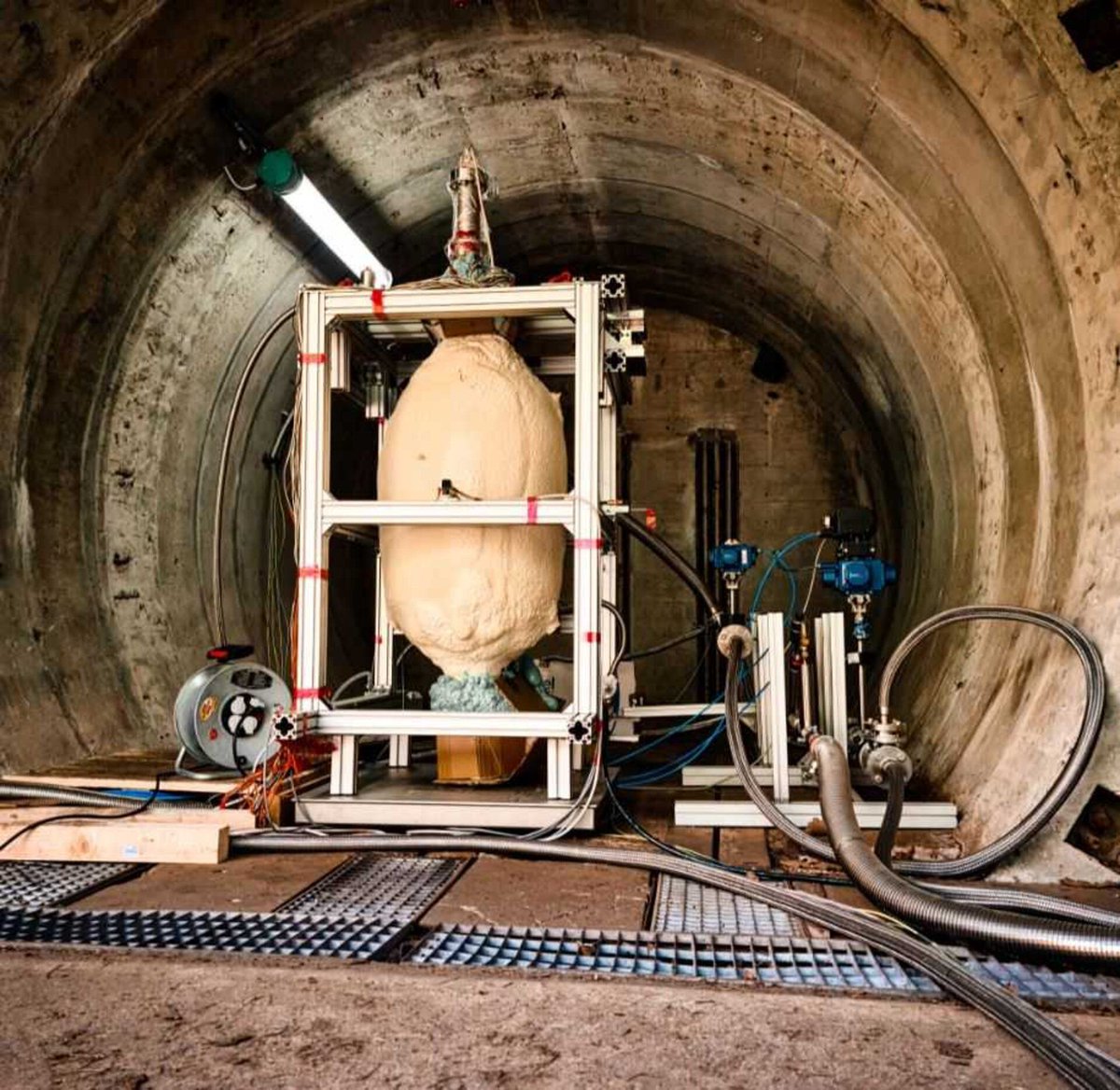Material science is still the unsung hero of space exploration. Rockets are flashier, and control systems more precise, but they are useless without materials that withstand the immense temperatures of forces required to get people and things off the planet. Now a team from MT Aerospace, working on a grant from ESA, has developed a new type of material that will be immensely useful in one of the most important parts of any rocket engine – the fuel tanks.
The material itself isn’t new – known as Carbon Fiber Reinforced Plastic (CFRP), the technology has been around for decades, and is widely used in automotive, aerospace, and civil engineering. However, no one has been able to successfully make a rocket fuel tank out of it until now.

Credit – MT Aerospace
Several challenges had to be overcome first – it had to be made leakproof and then had to withstand the extreme cryogenic pressures that come with storing rocket fuel. Hydrogen and oxygen, which are combined in a rocket engine, are notoriously difficult to retain. Existing field tanks, even those primarily made out of some form of composite, had an interior metal lining to ensure the highly reactive gas didn’t escape out of the tank.
Metallic linings have a downside though – they are heavy, and require many more parts and manufacturing steps than a pure CFRP tank would. Since launch costs are one of the primary cost drivers of space exploration, and weight is tied directly to launch cost, decreasing both the weight and the number of components is appealing for rocket manufacturers.

Credit: NASA/MSFC/Emmett Given
That appeal has been well known for a long time, so ESA spent some research money on projects to develop a novel, lightweight fuel tanks. The new technology developed by MT Aerospace was one of the outcomes of that funding.
It wasn’t the only outcome though – other technologies have been supported by the ESA’s Future Launcher’s Preparatory Programme. Those technologies will culminate in a full scale demonstrator project called Phoebus in 2023. The CFRP tanks MT developed will be applied to both Phoebus’ fuel tanks and also the supporting infrastructure between the oxygen and hydrogen tanks.

Credit – Ariane Group
When it is ready in 2023, Phoebus will supply the first major cryogenic test of a full sized CFRP system. But before then there’s an intermediate step for “small scale” stand alone tanks using the technology. If it proves as effective when scaled up as it has at smaller scales, CFRP technology has the potential to eliminate up to two tons of weight off of future rocket launches. That’s a lot of extra carrying power for the more flashy technologies of space exploration.
Learn More:
ESA – Rocket tanks of carbon fibre reinforced plastic proven possible
Composite World – Carbon fiber in pressure vessels for hydrogen
UT – NASA Tanks: Not Just Heavy Metal Any More
Lead Image:
Prototype CFRP tank in a pressure chamber
Credit – MT Aerospace

